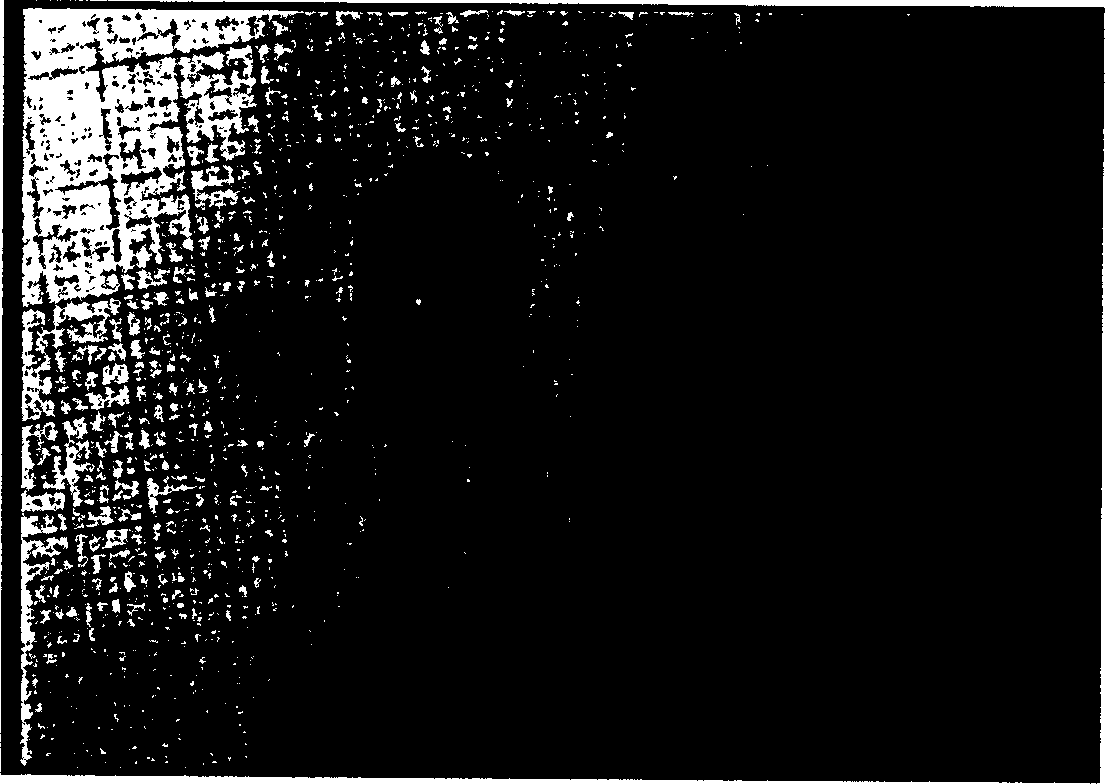Process for preparing porous support frame of soft tissue engineering with water-soluble high-molecular material as mould
A porous scaffold and cartilage tissue technology, applied in the field of biomedical engineering, can solve problems such as difficulty in demolding, inability to manufacture shapes, complex scaffolds, etc., and achieve the effects of short manufacturing cycle, realistic shape, and adjustable pore size
- Summary
- Abstract
- Description
- Claims
- Application Information
AI Technical Summary
Problems solved by technology
Method used
Image
Examples
Embodiment 1
[0032] 1. Turn over polyethylene glycol (PEG) negative mold: put PEG (average molecular weight 5000) into a beaker and heat to 70°C, melt it and pour it into a petri dish with a silicone positive mold facing upwards, so that the liquid The surface is flush with the edge of the male mold. After standing and solidifying, the soft male mold is removed to obtain the base of the PEG female mold. Fold along the positive contour of the male mold with smooth coated paper to make an open barrel-shaped container with the soft male mold as the bottom and the coated paper as its periphery. The molten PEG is poured into this opening, and after standing and solidifying, the male mold is peeled off to obtain a PEG female mold upper cover that matches the shape of the front of the male mold.
[0033] 2. Prepare poly-2-hydroxybutyrate (PHB) chloroform solution-NaCl particle mixture: use a series of standard sieves with a filtration range of 75 to 300 microns to screen out NaCl particles with ...
Embodiment 2
[0039] 1, remake polyethylene glycol (PEG) negative mold: use PEG (average molecular weight is 10000) mold making, following steps are with embodiment one.
[0040] 2. Preparation of 2-hydroxybutyric acid and 2-hydroxyvaleric acid block copolymer (PHBV) chloroform solution-NaCl particle mixture: use a series of standard sieves with a filtration range of 75 to 300 microns to screen out particle sizes between 100 and 150 Micron NaCl particles; weigh 1.0g of PHBV powder, put it in a round bottom flask, measure 10.0ml of chloroform and pour it into it, stir it with a polytetrafluoroethylene magnet in a water bath at 60°C, heat and reflux for 30 minutes to polymerize The substance is fully and evenly dissolved. Weigh 30 grams of NaCl particles and place them in a wide-mouth bottle, pour the polymer solution into it, wrap the stopper of the wide-mouth bottle tightly with polytetrafluoroethylene raw tape, make it airtight, and let it stand for 12 hours to make the solution fully infi...
Embodiment 3
[0043] 1, remake polyethylene glycol (PEG) negative mold: use PEG (average molecular weight is 20000) mold making, following steps are with embodiment one.
[0044] 2. Preparation of 2-hydroxybutyric acid and 2-hydroxyhexanoic acid block copolymer (PHBH) chloroform solution-sucrose particle mixture: use a series of standard sieves with a filtration range of 75 to 300 microns to screen out a particle size of 200 to 250 Micron sucrose particles; Weigh 1.0g of PHBH powder, put it in a round bottom flask, pour 10.0ml of chloroform into it, stir it with a Teflon magnet in a water bath at 60°C, heat and reflux for 30 minutes to polymerize The substance is fully and evenly dissolved. Weigh 30 grams of sucrose particles and place them in a wide-mouth bottle, pour the polymer solution into it, wrap the stopper of the wide-mouth bottle tightly with polytetrafluoroethylene raw tape, make it airtight, and let it stand for 12 hours to make the solution fully soak the sucrose particles. St...
PUM
| Property | Measurement | Unit |
|---|---|---|
| particle diameter | aaaaa | aaaaa |
| melting point | aaaaa | aaaaa |
| particle diameter | aaaaa | aaaaa |
Abstract
Description
Claims
Application Information
 Login to View More
Login to View More - R&D
- Intellectual Property
- Life Sciences
- Materials
- Tech Scout
- Unparalleled Data Quality
- Higher Quality Content
- 60% Fewer Hallucinations
Browse by: Latest US Patents, China's latest patents, Technical Efficacy Thesaurus, Application Domain, Technology Topic, Popular Technical Reports.
© 2025 PatSnap. All rights reserved.Legal|Privacy policy|Modern Slavery Act Transparency Statement|Sitemap|About US| Contact US: help@patsnap.com



